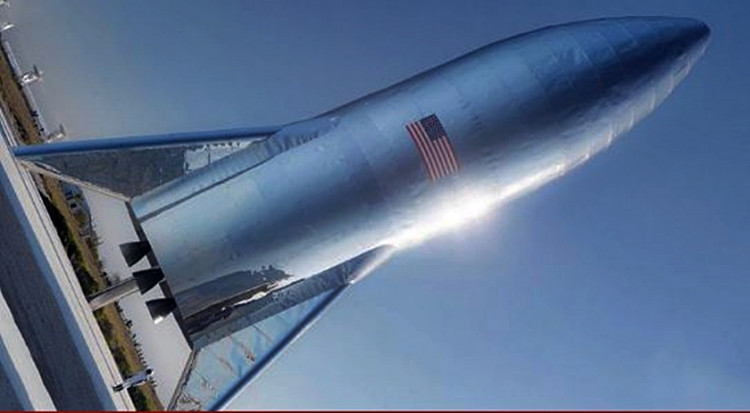The new Starship spacecraft from SpaceX that will one day take humans to Mars will deploy a revolutionary technology that dissipates the immense heat of atmospheric re-entry by using water.
In addition, both Starship and its first stage booster named Super Heavy will have their fuselage built from heavier stainless steel instead of much lighter aluminum or carbon fiber. These and other fascinating bits of information about Starship/Super Heavy, the biggest launch vehicle in the world, were shared recently by SpaceX founder Elon Musk.
Musk said stainless steel won't only make Starship stronger and look cool. It'll help Starship stay cool, as well. He said using stainless steel will allow him the opportunity to do something he believes no one has ever done before.
Using stainless steel will allow SpaceX to build the world's first "regenerative heat shield." The easiest way to describe this form of protection is to use Musk's own definition. He says this weird shield is like "a stainless-steel sandwich... that bleed(s) water."
The tech behind the regenerative heat shield is to use a technique known as transpiration cooling to cool the outside of the Starship, also known as its "windward" side. Getting this done will involve building a shell for Starship consisting of two layers of stainless steel separated by a liquid-cooled gap.
"You flow either fuel or water in between the sandwich layer," said Musk, "and then you have micro-perforations on the outside -- very tiny perforations -- and you essentially bleed water, or you could bleed fuel, through the micro-perforations on the outside."
Musk said this seeping of a liquid onto the rocket's windward side will allow Starship to remain cool. On the other hand, the double-walled shell adds strength to the fuselage by stiffening it, helping it avoid collapse.
"You have a heat shield that serves double duty as structure," said Musk. "Yeah. To the best of my knowledge, this has never been proposed before."
In contrast, traditional aerodynamic heat shields such as those on the Space Shuttles and Russia's Soyuz spacecraft use special materials or composites that can withstand the incredible heat of atmospheric reentry.
One type of shield is the ablative heat shield. This consists of a layer of plastic resin, the outer surface of which is heated to a gas, which then dissipates the heat by convection. These shields were used on the U.S. Mercury, Gemini, and Apollo spacecraft.
Another heat shield is the thermal soak. This heat shield uses an insulating material to absorb and radiate heat away from the spacecraft surface. This type of shielding was used on the Space Shuttle. Ceramic or composite tiles over most of the Space Shuttle's surface, along with reinforced carbon-carbon material on the highest heat load points, prevented the Shuttles from being destroyed on re-entry.






